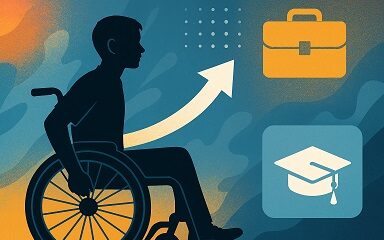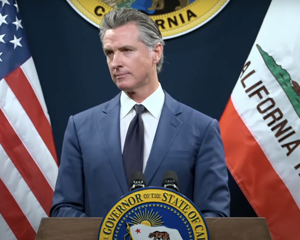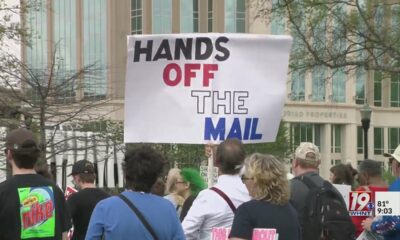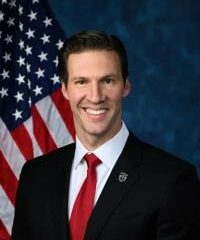Jill Barton, University of Miami
The current Supreme Court has upended historic precedent on abortion protections and drawn scrutiny for ethics conflicts, while its docket remains packed with high-profile cases set to dominate headlines in the months ahead.
Yet one of its lesser-known departures from the past lies in its approach to punctuation.
Justice Neil Gorsuch boldly departed from court tradition in 2017 with his first Supreme Court opinion. In 11 pages, he used 15 contractions. He even used one in the first paragraph: “That’s the nub of the dispute now before us,” he casually stated.
Gorsuch’s predecessor, the late Justice Antonin Scalia, was known as a gifted, dramatic writer. Scalia thought that contractions – combining two words with an apostrophe into a shorter form, such as “don’t” in place of “do not” – were “intellectually abominable.”
Gorsuch’s strikingly informal phrasing signaled a shift toward a more modern, conversational writing style by all nine justices.
While the court’s politics have veered right, the justices’ prose has arguably shifted left, becoming more liberal and accessible. Today’s Supreme Court unanimously and actively embraces a progressive writing style, rebelling against old-school grammar rules, according to my study of 10,000 pages of opinions from the past decade.
Twitter touts #GorsuchStyle
The first opinion assigned to new justices is usually a slog. In a kind of hazing tradition, they are typically assigned to write on a tedious legal issue that easily wins unanimous agreement.
Gorsuch used his short opinion on the dry topic of debt collection to declare a more colloquial style. In Henson v. Santander, the Harvard Law graduate spoke directly to readers, using “you” and variations of that personal pronoun 17 times, something his colleagues rarely did. Gorsuch wrote with apparent nonchalance, calling a debt collector “the repo man.”
Journalists and court watchers took notice, brewing an online conversation about #GorsuchStyle.
Now, most of the justices use contractions. Arguing that creativity would be stifled in a copyright infringement case, Justice Elena Kagan insisted: “And there’s the rub. (Yes, that’s mostly Shakespeare.).”
Hey, you − I’m talking to you
While Gorsuch might have sharpened the quill of the court’s writing revolution, all nine justices now write more casually to reach an increasingly savvy public. A few justices even drop oh-so-casual exclamation marks in their opinions.
“The majority huffs that ‘nobody disputes’ various of these ‘points of law,’” Kagan decried in a 2021 dissent against a decision curtailing voting rights. “Excellent! I only wish the majority would take them to heart.”
In its 2023-24 term, my research finds, the justices appealed to readers using “you” and variations of it nearly 300 times in their 60 opinions – up 40% from five years ago.
“A police officer can seize your car if he claims it is connected
to a crime committed by someone else,” Justice Sonia Sotomayor told readers, dissenting in a 2024 seizure case.
Deploying both “you” and a contraction, Justice Ketanji Brown Jackson recently quipped in a 2024 criminal bribery decision: “But you don’t have to take my word for that.”
Given that many good writers – lawyers, academics and journalists among them – avoid personal pronouns as a matter of style, the justices’ new direction shows a surprising lack of formality.
The writing style of the justices today starkly contrasts that of their predecessors, who commonly used dense wording and labyrinthine sentences. Take this 1944 line from Justice Robert H. Jackson, whom several justices name as the writer they admire most:
“But here is an attempt to make an otherwise innocent act a crime merely because this prisoner is the son of parents as to whom he had no choice, and belongs to a race from which there is no way to resign.”
His writing feels lyrical and powerful but is in no way playful or personal.
Chief Justice John Roberts, known for his rhetorical prowess, has long lamented that the media must summarize and translate the court’s lengthy opinions for the public. In 2017, he praised the monumental desegregation decision, Brown v. Board of Education, for its brevity.
At just 10 pages, Roberts said, newspapers “had to publish the whole thing so that people could read it. They didn’t get to say, ‘Oh, this is what this means.’”
Good, clear writing has power
The court’s embrace of a more accessible writing style comes as its own popularity is plummeting. While 80% of Americans viewed the court favorably in the mid-1990s, only about 50% do now.
The 2022 decision to overturn Roe v. Wade was particularly controversial, inciting two years of protests by abortion-rights supporters and a national argument over reproductive rights. But even conservative critics decried the court’s July 2024 decision to broaden presidential immunity in Trump v. United States as “a mess” and an “incoherent” “embarrassment.”
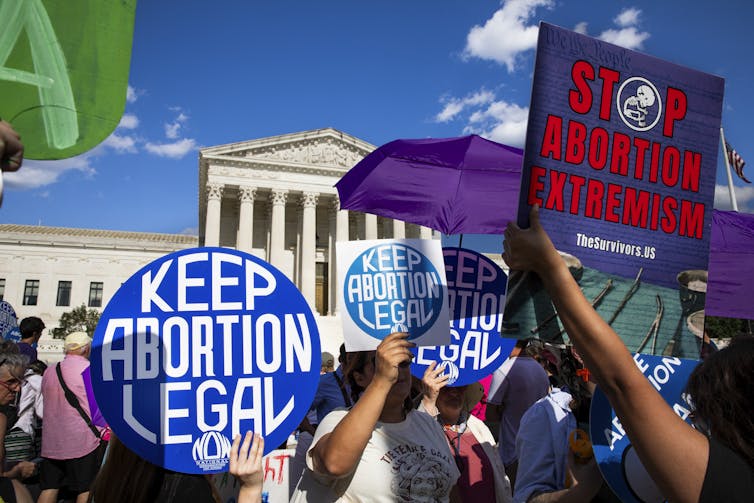
Aashish Kiphayet/Middle East Images/AFP via Getty Images
Roberts, who began his career as a young lawyer in the Reagan administration, has earned a reputation for taking a measured, long-term approach to avoid controversy, and he strives to unify the justices in consensus. The first few opinions of the 2024-2025 term, including the decision to ban TikTok, were unanimous – as are roughly 50% of the court’s decisions, though these tend to address less contentious issues.
But leaks of draft opinions and memos about the justices’ confidential deliberations paint a picture of a storied institution in disarray. Scrutiny of the Supreme Court is mounting, and critics, including former President Joe Biden, have called for a binding ethics code and term limits.
For the Roberts Court, the challenge ahead lies in securing its legitimacy among a deeply polarized American public. The justices making their opinions more approachable may be a small gesture in that direction.
“The thing about the Supreme Court that I think is so magnificent is that the justices get to actually explain their votes,” Jackson told NPR on Sept. 4, 2024. “We are the one branch of government in which that is the standard.”
Can clear, powerful arguments presented in plain, straightforward language help rebuild trust in the institution? The justices’ subtle shift toward modernizing their writing suggests they believe it might.![]()
Jill Barton, Professor and Director of Legal Writing, University of Miami
This article is republished from The Conversation under a Creative Commons license. Read the original article.



